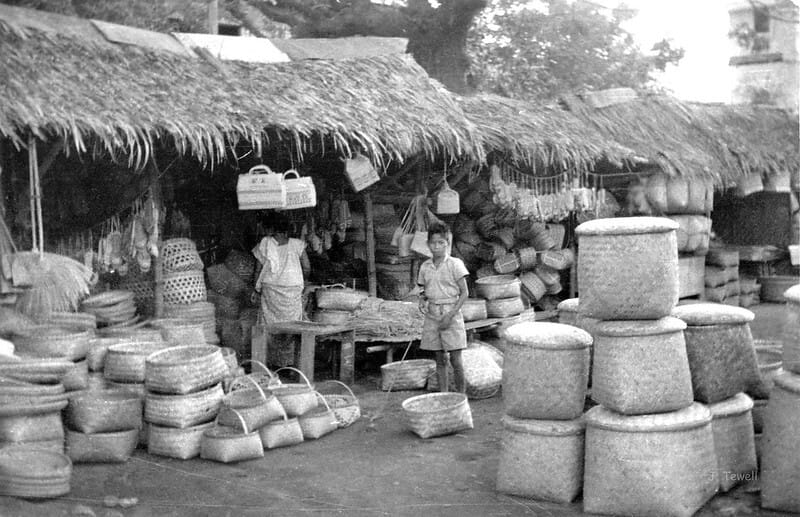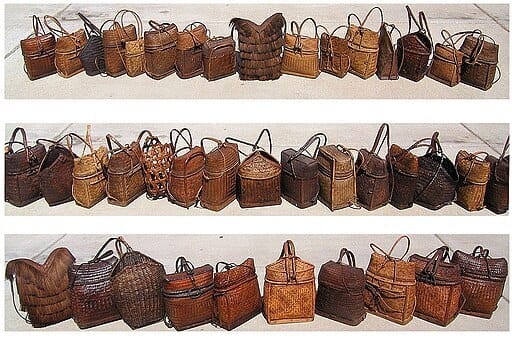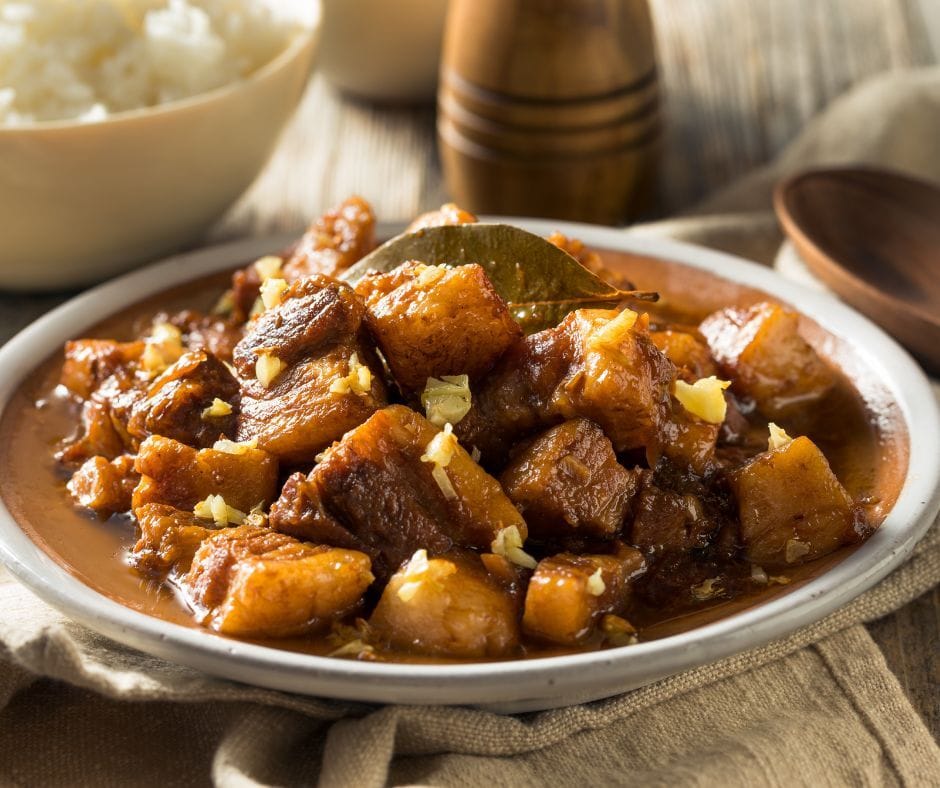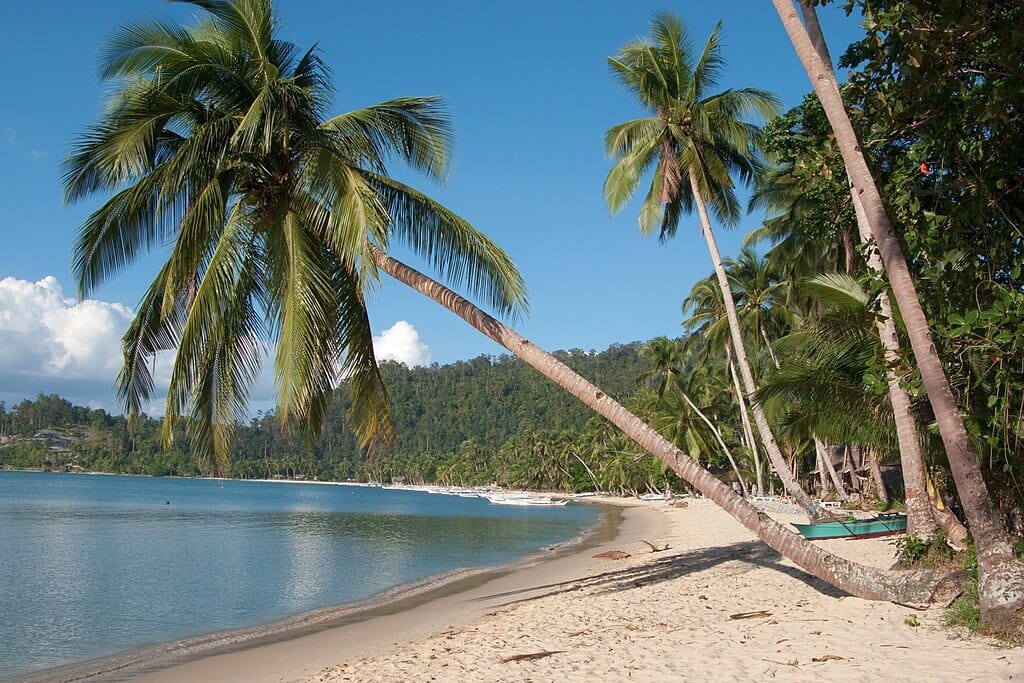- Finding Utopia Newsletter
- Posts
- Woven Traditions – The Timeless Art of Philippine Basketry
Woven Traditions – The Timeless Art of Philippine Basketry
Stories: Woven Traditions, The Timeless Art of Philippine Basketry - Turo‐Turo Carinderia, The Heart of Filipino Everyday Dining - San Vicente, Palawan, Explore the Philippines’ Longest White-Sand Escape

Hello Everyone,
Welcome to Finding Utopia, your go-to newsletter for discovering how to travel the Philippines and beyond!
Here is what we have for you today.
Woven Traditions – The Timeless Art of Philippine Basketry
Turo‑Turo Carinderia – The Heart of Filipino Everyday Dining
San Vicente, Palawan – Explore the Philippines’ Longest White-Sand Escape
Woven Traditions – The Timeless Art of Philippine Basketry

Step into the world of Philippine basket weaving, where simple plant fibers are transformed into cultural masterpieces. In our latest blog, Woven Traditions: The Art and Heritage of Philippine Basket Weaving, we explore how this ancient craft continues to thrive—woven into the daily life, identity, and spirituality of generations
Roots of the Craft
Long before the arrival of colonizers, indigenous Filipinos were already weaving baskets from bamboo, rattan, palm, and nito vines. These baskets were essential for rice harvesting, food gathering, fishing, and ceremony—mirroring people’s close bond with nature.
Regional Variations & Techniques
Across the archipelago, each region has its own weaving style, materials, and terminology:
Cordillera Pasiking: Northern Luzon’s rattan-and-bamboo knapsack backpacks, traditionally sacred and used in Ifugao rituals.
Pala’wan Tingkep: Palawan’s closed rice-baskets woven from forest vines, featuring symbolic motifs and crafted sustainably.
Banig & Amakan: Everyday split-pandan mats and bamboo screens used in homes for cooling and ventilation.
Crafting methods such as plaiting, coiling, wickerwork, and twining are carried through deep communal knowledge. Both men and women share roles: Cordillera weavers rely on plaiting, while in the Kalinga region, men traditionally weave.
Beauty in Function
Basketry in the Philippines is a seamless blend of utility and artistry. Baskets hold rice, harvests, and sacred offerings. Mats are rolled out for sleeping or ceremonies. Screens and bags serve both household and fashion purposes. The craft is aesthetic, durable, and eco-friendly—truly a living art form
Guardians of the Forest
Community practitioners such as the Pala’wan have woven conservation into their craft. Gathered sustainably, vines and bamboo are replenished, while basket weaving sustains livelihoods. In Palawan, supporting tingkep artisans helps preserve forests.
Evolving with the Times
Basket weaving isn’t stuck in the past—it evolves. Contemporary makers are creating fashionable bags, boutique home décor, and craft showpieces, while retaining ancestral aesthetics. Festivals like Banigan and Amakan showcase the craft’s vibrant rebirth and showcase its growing appeal.
Support the Weavers
You can help sustain this living heritage:
Buy direct from artisans: Ensures fair income and cultural continuity
Join workshops & tours: Supports craft tourism and inter-cultural exchange
Learn the craft: Know-how transmission keeps the tradition alive
Help protect forests: Healthy ecosystems sustain weaving materials
Why This Matters
Philippine basket weaving is more than a craft—it’s a thread that ties community to nature, history to modernity, form to function. Every woven basket carries a story of ancestral land, cultural resilience, and ecological wisdom.
When you support these artisans, you're supporting artistry, sustainability, and identity—all woven, quite literally, into every strand.
Discover the full weave of this tradition and meet the makers here:
Turo‑Turo Carinderia – The Heart of Filipino Everyday Dining

In a vibrant corner of the Philippines, steaming trays of home-cooked food beckon in what’s known locally as a turo‑turo carinderia—literally "point‑to‑point." Our latest blog post, Turo‑Turo Carinderia, celebrates this beloved eatery style—a fusion of affordability, flavor, and community spirit deeply woven into Filipino daily life.
What Makes Turo‑Turo Special
Convenient and Affordable Carinderias emerged in the early 1800s to serve travelers and locals alike. Today, they’re still the go-to for quick, affordable meals—choose your rice and mix-and-match ulam (viand) trays with a simple point of the finger.
Community Dining at Its Best Often family-run, these eateries sit in neighborhoods, markets, or traffic-heavy zones—featuring sari-sari stores, tricycle stops, and welcome familiarity. Grab a meal, chat with the vendor, and swap local news while you eat.
A Daily Culinary Surprise The menu changes each day based on ingredient availability and cook’s inspiration. Expect favorites like pork adobo, chicken tinola, kare-kare, ginisang vegetables, and skewered meats—all made from scratch.
Cultural Roots and Evolving Trends
Heritage Eateries The turo‑turo concept traces back to British Sepoys and the pre-railway era—later serving pilgrims traveling to Antipolo Church. Over time, it became a beloved Filipino institution.
Local Influence Turo‑turo carinderias use local ingredients—fresh catch by the sea, garden vegetables, regional spices—giving each locale its distinct taste profile.
Modern Revivals Today’s versions blend tradition and innovation: think cashless payments, eco-friendly packaging, open-air patio designs, and even online delivery options for modern diners.
Eating at a Turo‑Turo—Tips & Etiquette
Pick Wisely: Mix a rice bowl with 2–3 ulams—balanced, flavorful, and affordable.
Mind Hygiene: Choose eateries with clean counters and regularly heated dishes.
Skip the Touch: Don’t touch food directly—use spoons or the vendor’s scoops.
Bring Cash: Most operate now with mobile points, but smaller stalls prefer cash.
Chat Kindly: A smile and simple “salamat” go a long way in these community spaces.
Why Turo‑Turo Still Matters
Access for All: It’s a haven for budget-conscious students, blue-collar workers, and families seeking comfort food.
Sustains Local Economy: Supports small-time vendors, neighborhood suppliers, and local food systems.
Everyday Celebration: In one meal, you taste regional cooking, family recipes, and a sense of belonging.
Discover Yours Today
Whether in urban barangays or provincial towns, a turo‑turo carinderia is always nearby—and always worth the taste. Look for chafing dishes under shade, family banter, and the comforting aroma of simmering broths.
Dive deeper into the history, cultural textures, and modern twists of turo‑turo dining in our full blog post:
Enjoy your next Filipino culinary adventure—one scoop at a time!
San Vicente, Palawan – Explore the Philippines’ Longest White-Sand Escape

Nestled along the pristine northwest coast of Palawan, San Vicente is a destination that feels like a well-kept secret—at least for now. Our latest blog post, San Vicente, Palawan, introduces this laid-back paradise, known for its exquisite stretches of white-sand beaches, serene island-hopping experiences, and untouched natural beauty. Positioned between El Nido and Puerto Princesa, it’s becoming a favorite among travelers seeking refuge from the crowds.
Long Beach – A Paradise in Plain Sight
San Vicente boasts the longest white-sand beach in the Philippines, stretching approximately 14 km. Locals call it “Long Beach,” a tranquil corridor lined with swaying coconut palms and framed by limestone cliffs. Kayaking, slow strolls, or simple beach lounging await, all without the crowds you’d find in Boracay. This is solace, simplicity, and coastal beauty at its finest ([turn0search6], [turn0search15]).
Island-Hopping & Marine Life
Beyond the main strand lies a collection of idyllic islets perfect for exploration. Highlights feature:
Boayan Island: The largest island in San Vicente, ideal for quiet camping and snorkeling.
Twin Reef & Starfish Sandbar: Snorkel amid vibrant coral gardens and encounter foraging starfish off emerald shores.
Turtle-Watching: Spot endangered Hawksbill and Olive Ridley turtles near Port Barton and other marine sanctuaries during island tours.
These tours typically include boat transport, snorkeling gear, island meals, and a wealth of aquatic encounters.
Bato ni Ningning & Sunset Moments
For panoramic views of Long Beach, head to Bato ni Ningning, a distinctive rock formation overlooking the coast. It’s a popular vantage at sunrise or sunset—perfect for capturing dramatic coastal panoramas and peaceful golden-hour reflections.
Authentic Vibes & Local Life
San Vicente’s charm lies in its unhurried pace. The town centro (Poblacion) and nearby Port Barton barangay offer rustic stays, family-run eateries, and relaxed nightlife under the stars. With few shopping malls and more communal benches, the rhythm of life here is gentle, genuine, and rooted in coastal culture.
How to Get There & When to Visit
Best Time: Dry season from December to May offers clear skies and calm seas for swimming and island adventures—though city officials point out San Vicente lies outside the typhoon zone, so it’s relatively safe year-round.
Getting There: Reach San Vicente via a 30-minute flight from Puerto Princesa aboard Air Juan or take a scenic 3–4 hour drive/van ride along coastal highways from either Puerto Princesa or El Nido.
Getting Around: Explore Long Beach and villages by motorbike or tricycle hop-on tours. Multi-day stays allow easy access to island-hopping piers. Cash is essential—ATMs are rare
Where to Stay: Options range from beachside eco-resorts like Club Agutaya to cozy guesthouses in town—a refreshing variety amid natural surroundings.
San Vicente—A Gem Worth Exploring Now
San Vicente offers a rare chance to experience Palawan before development takes over. With its untouched beaches, vibrant marine wildlife, and authentic small-town charm, it’s the perfect escape for travelers seeking a genuine coastal getaway.
Discover our full travel guide and plan your serene retreat:




Reply